Contents

Special Feature
Along The Waterfront
I find waterfront scenes fascinating. It started with John Armstrong’s seaside module in the GAZETTE and the Thatcher’s Inlet series in the Railroad Model Craftsman. So, when my Sn3 layout was on the drawing board, a waterfront town was the first consideration. On my layout that town is Rock Harbor. Here, the railroad earns the title “Navigation Co.” with two track spurs running onto the pier and a company-owned tug working the harbor.
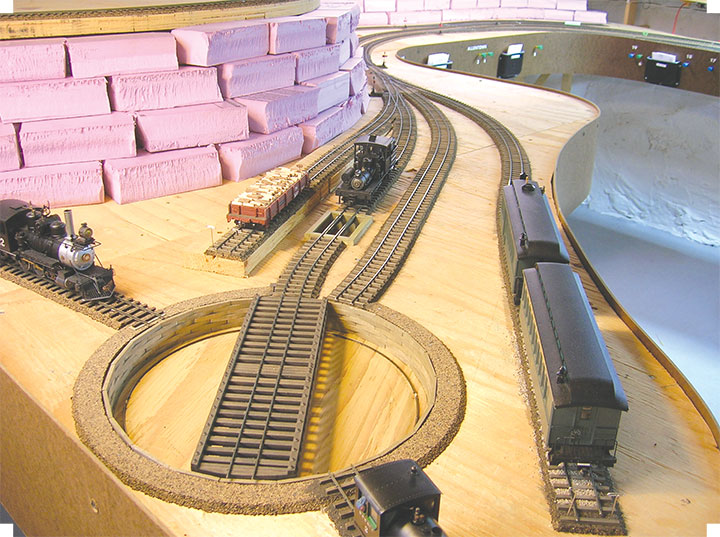
Feature
Experiments in Operation
Many clubs and individual modelers have gone to great lengths over the years to faithfully duplicate the operation of prototype railroads, and while this can be a fascinating aspect of the hobby for some, the paperwork and other complications needed to accomplish it have never really appealed to me. I want to move traffic on my layout in a logical and reasonably realistic manner, but simplicity is always in the forefront of my mind. In fact, one of the reasons I finally retired after a 40-year career was the increasingly burdensome paperwork I had to deal with. If I didn’t like it at work, I certainly wasn’t going to go out of my way to generate it in my hobby!
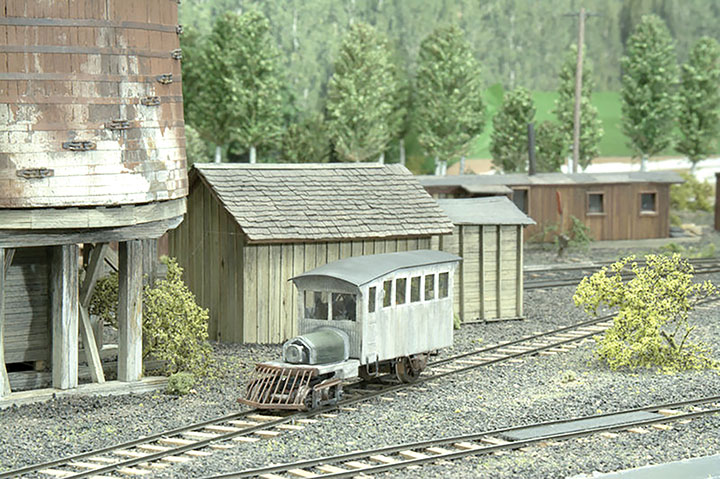
Feature
The Resurrection Of A Casey Jones
To the delight of railbus fans, Bob Sloan made scale HO, S and O brass etchings of the Silverton Northern’s Casey Jones railbus way back in the mid-seventies. You might find a set at the Narrow Gauge Convention this September in the Tacoma Seattle area. Dan Pyzel had two sets of Bob’s etchings in S scale, and Dan started asking me to help him create a model of Casey Jones. He assumed that since I had nine RGS Galloping Geese, that I might be amenable to the challenge. While I had done extensive re-motoring to make the geese run as well as our best S scale locomotives, I did not have the brass scratchbuilding skills of my friend and professional model builder, Kelley Morris, so I sent the etchings straight to him. I asked Kelley to build a Casey Jones starting with the Robert Sloan etchings.
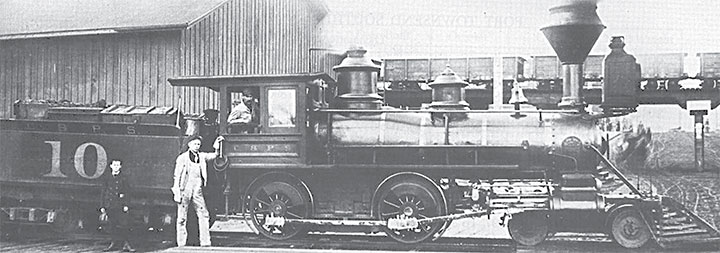
Feature
Locomotives Of The White Pass & Yukon Route
The Story of the White Pass & Yukon Route has been told many times, but the stories of its locomotives has never been put down in print, at least not in a way that one can go to find the necessary information regarding a particular locomotive of the line. Several of the early locomotives have histories with holes where conjecture fills in. Other locomotive histories were quite concise, and several of the locomotives have survived for nearly 140 years. This is the third article in my series about the early locomotives of the famed White Pass & Yukon Route. Part 1 was in the March/April issue and covered the first two locomotives of the line, one of which was the first locomotive in the Alaska territory. Part 2 was in the May/June issue and covered locomotive number 3/53 and its connection with the Denver & Rio Grande. This time I will discuss two locomotives: the oldest locomotive to ever operate on the White Pass and the youngest, or newest locomotive (at the time that it was acquired) on the railroad.
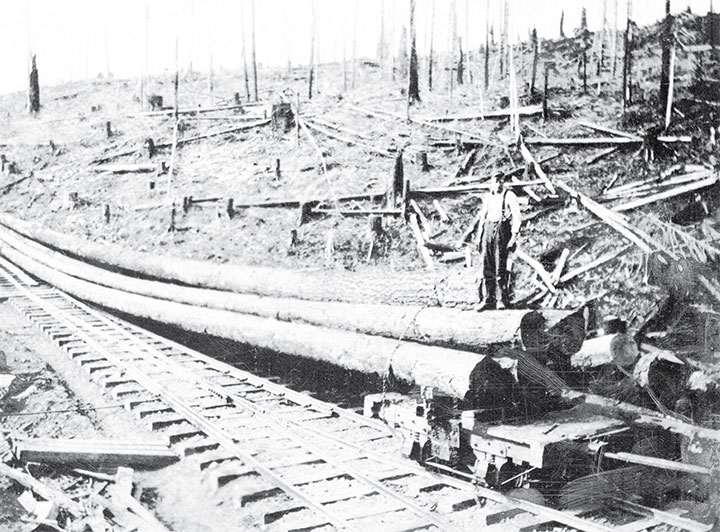
Feature
The Inman-Poulsen Lumber Company
In 1889, Robert D. Inman and Johan Poulsen organized the business of Inman, Poulsen and Company and a year later incorporated it. It eventually became known as Inman-Poulsen Lumber Company. They built a sawmill in Portland, Oregon, and operated it successfully until it burned in a fire in 1896. The two partners were undaunted by the disaster and within ninety days built a more modern plant which they had running and cutting 100,000 board feet of lumber per day. By 1903, they had the largest lumber company in Oregon with 350 employees, later peaking at 700 employees. By 1906, due to improvements made in the plant, daily capacity and output was increased to 500,000 board feet daily. Outside the local business done by the company, the output was sold to the California trade, to increasing numbers of eastern customers, as well as to the railroads and for export shipment.

Feature
The On3 Hangman Creek Lumber Company
I described the On3 Hangman Creek Lumber Company layout in the May/June 2012 GAZETTE. The layout was built by a group called the Sunset Junction Modelers consisting of Stan Oxendahl, Jim Smith, Tom Jennings, and myself to be exhibited at the 2012 National Narrow Gauge Convention in Bellevue, Washington. When I heard that the 42nd National Narrow Gauge Convention was to be held near us in the Seattle/Tacoma area, we decided it was time to exhibit the layout once more. So, I reached out to Mike O’Connell and the Convention organizers and asked if I could bring the layout and share it with fellow modelers one more time.
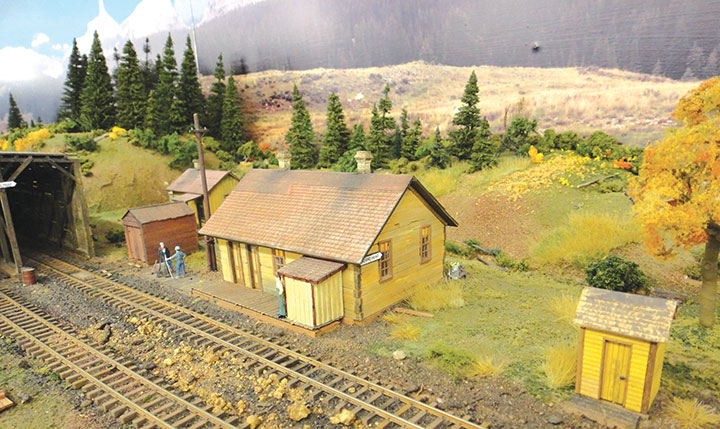
Feature
Layout Refinements
OK, the title got your attention, but I bet you can’t imagine what you’re getting into here! I’m the clothshell scenery guy, remember? (see book reviews page 94). I build scenery without plaster or anything else that needs to be mixed up or cleaned up or that’s soupy, goopy, drippy, or messy. So, it stands to reason that I might also do painting without paint. If I don’t use paint for painting, what do I do? Well, I confess that I do one layer of paint. I start by spraying the entire model with a coat of gray. Any gray will do, but the lighter the better and it must be flat. I use Model Master Flat Gull Gray or Camouflage Gray. I suppose gray primer from a hardware store would work too. And that’s it for paint—one coat of gray spray paint and we’re ready to paint without paint.
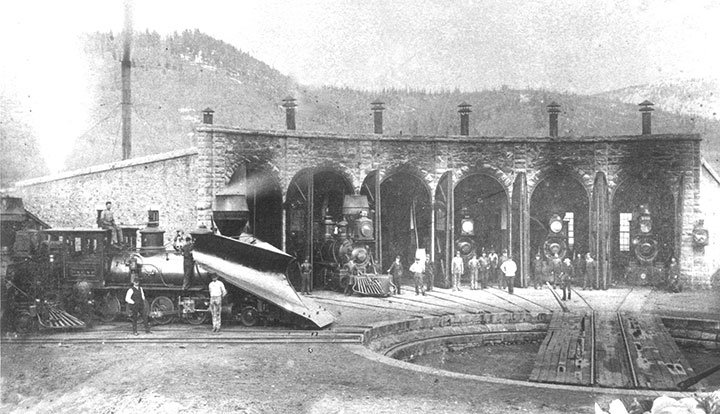
Feature
The Como Roundhouse on my 0n3
A roundhouse is the most prominent structure in a railroad yard and the Como roundhouse is no exception. The coal dock and water tank are important, but the roundhouse is certainly the focal point. A series of moves caused my original CC&S to be dismantled, with locomotives, rolling stock and some structures boxed up and put in storage for a few years. During that time, I still bought kits which were also put in storage. One of the kits was the Como roundhouse, produced by Colorado Scale Models. The kit was nicely packed in the kit box and each plaster casting was individually wrapped, so I only looked at the instructions before storing it with my other boxes. More years passed than I anticipated before we built our Colorado retirement home, and I was able to start constructing the current version of the CC&S.
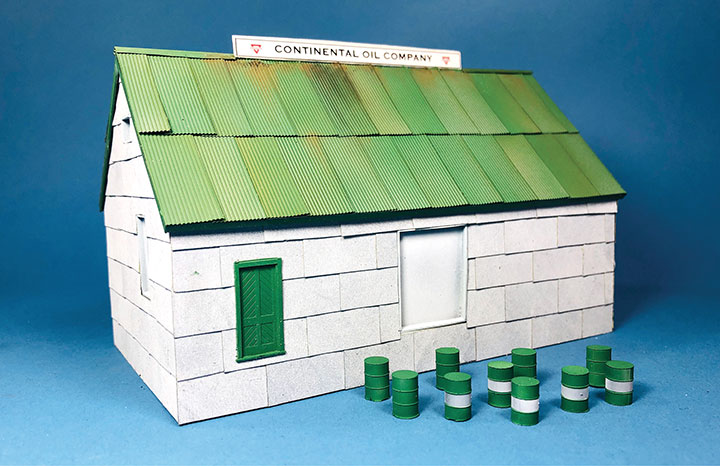
Feature
Old Placerville Petroleum Distributions
The recent release by San Juan Models of their spectacular HOn3 Conoco tank cars was the inspiration for this project. I had been waiting years for these cars to become available in kit or ready-to-run form. With their delivery and integration into the operating scheme on my HOn3 Rio Grande Southern layout, it became apparent that I hadn’t built a single Conoco distributor for my layout. All I had was empty spurs with no structures. With that, I decided it was time to build some structures and I decided to start at Old Placerville.

Feature
The Family Rands
Over the past few years, I have devoted an occasional column to the pioneer and prominent manufacturers in narrow gauge. After all, we enjoy a rich heritage of narrow gauge products developed over the years and the folks behind those products deserve recognition. In this column and at least one more, I hope to continue that practice. This column celebrates a truly generational family in the industry who has made, and continues to make significant contributions to our enjoyment of the hobby. Our story begins with the late Bob Rands, a fixture at past National Narrow Gauge Conventions (NNGC) and founder of Micro Engineering (ME), the leading supplier of track and bridges/viaducts for both standard and narrow gauge lines. Bob was well known at NNGC, and train shows as well as for supporting the National Model Railroad Association with appearances at the National Train Show, held in conjunction with the NMRA Convention each year.
